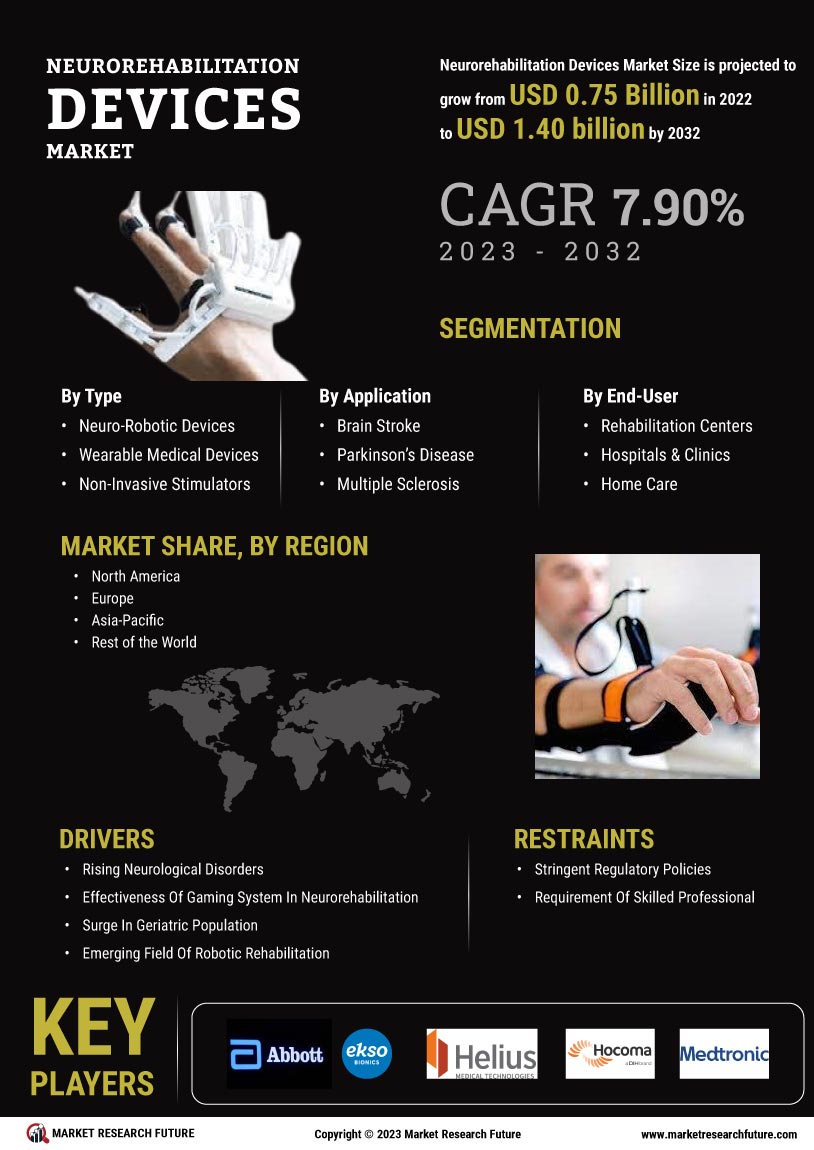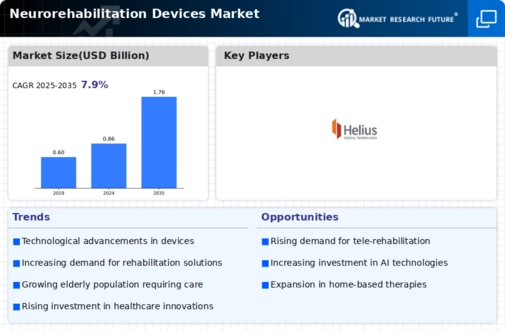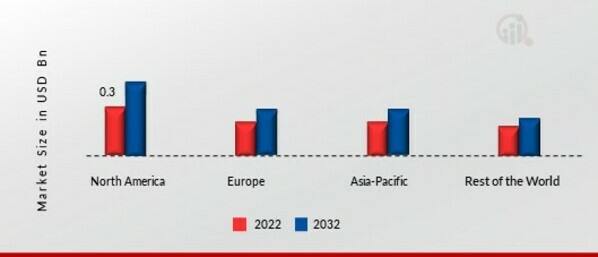Rapid Technological Advances to boost market growth
During the forecast period, significant technology advancements and the rapid increase in the world's aging population will also contribute to market expansion. The prevalence of neurological conditions like Parkinson's disease and multiple sclerosis is expected to rise, restricting patient mobility, and fueling market expansion. Additionally, the market for brain rehabilitation devices is expanding due to the aging population's rapid increase and the effectiveness of gaming systems in neural rehabilitation. A faster rate of development will ensure that industry growth will be strong during the forecast period.
Increased rates of neurological illnesses, greater patient and care provider awareness, and an increase in the target patient population are the main drivers of the industry's expansion. ly, the senior population is growing, which has raised the frequency of age-related neurological illnesses and, in turn, the prevalence of movement impairments. The demand for adequate and effective neuro-rehab tools and services is expected to rise. Some neurological diseases cannot be fully cured or do not currently have effective treatments. In these situations, neurorehabilitation can save patients and enables them to perform daily tasks.
In recent years, these services have seen major adjustments, which are expected to fuel the growth of the neurorehabilitation devices market during the forecast period.
Recent studies from the WHO indicate that the number of those 65 and older is predicted to increase from 7% in 2000 to 16% in 2050. According to data released by the UN in 2012, there will be 1.13 billion older people worldwide by 2022. The aging population is more susceptible to age-related neurological diseases like Parkinson's disease as their immune systems are weaker. As a result, during the projected period, the market for neurorehabilitation devices will expand due to the growing base of an older population.
The need for neurorehabilitation equipment is expected to rise in Asian nations like Japan, China, and India due to an aging population and significant untapped potential. The most frequent symptom of neurological disorders is immobility. Stroke is the largest cause of disability in the US and the fifth highest cause of death, according to the American Stroke Association. Multiple sclerosis affects about 2.5 million people worldwide, but Parkinson's disease affects 10 million. These factors are expected to widen the market CAGR across the globe in the recent years.
The utilization of electronic robotic and computer-aided apparatus has significantly altered neurorehabilitation in recent years. These tools help improve how well patients respond to therapeutic interventions for rehabilitation. The sector has great growth potential because neurological disorders are becoming more common. This is another factor driving the growth of the neurorehabilitation devices market revenue.
Significant technological developments and the quickening rate of global population aging will both support market growth during the predicted period. Parkinson's disease and multiple sclerosis are two neurological disorders that are predicted to become more common, limiting patient movement and driving market growth. One of the main factors propelling market expansion is the rise in demand for neurorehabilitation equipment. The market for brain rehabilitation equipment is also growing as a result of the rapidly rising elderly population and the success of gaming systems in neural rehabilitation. Faster development will guarantee sustained industry growth over the foreseeable period.
It is anticipated that there will be a greater need for adequate and efficient neuro-rehab technologies and services. Some neurological conditions are either not currently treatable or incurable. Neurorehabilitation can help patients in these circumstances and restore their ability to carry out regular chores. These services have seen significant changes recently, which are anticipated to drive the market for neurorehabilitation devices to develop throughout the forecast period.
Rising awareness about the benefits of neurorehabilitation devices, as well as the increasing incidence of neurological conditions like stroke, Parkinson's disease, multiple sclerosis, cerebral palsy, traumatic brain injury, and spinal cord injury, are all factors that contribute to the expansion of the neurorehabilitation market. The neurorehabilitation market is expanding due to a number of factors, including rising R&D spending and an increase in product approvals of neurorehabilitation devices from regulatory bodies.
February 2023: The pharmaceutical company Lupin plans to house a variety of neuro-rehabilitation services under one roof at its Atharv Ability center, marking the third services-related venture it has launched in just over a year. While reviewing the neurology field, a need gap was discovered due to patient outcomes and neurological illnesses' high rates of morbidity and disability. With a variety of rehabilitation programs for post-stroke patients, patients with traumatic brain injury, spinal cord injury, paediatric neurological conditions, Parkinson's, cerebral palsy, and multiple sclerosis, the multi-disciplined robotic and computer-assisted center may be the only one of its kind in India.
For example, in May 2023, the University of Calgary, in collaboration with Alberta Health Services, launched the Researching Strategies for Rehabilitation (RESTORE) Network, which will conduct clinical trials and new treatments to improve quality of life for people with neurological diseases.
For instance, in April 2023, Sensoria Health partnered with Padula Rehabilitation Technologies (PRT) and released NeurOpTrek – a cutting-edge wearable device that improves vision and helps reduce fall risk among the elderly who are prone to such health conditions.
For example, in February 2023, MindMaze introduced Izar, a completely new tool that has been recently made accessible to both United States as well as some European countries such as Switzerland, Germany and France. The aim of this device is to assist PD patients during their hand function assessment.
In addition to this, Neurofenix secured EUR7 million capital investment from UK investors, thus enabling it to extend its product line and start US-based testing in April 2022. Through the patient-centric approach taken by a company toward at-home rehabilitation programs that have proved more supportive and engaging than traditional alternatives.
The ongoing advancements in neurorehabilitation devices suggest a transformative potential in enhancing recovery outcomes for individuals with neurological impairments, reflecting a growing commitment to integrating technology into therapeutic practices.
National Institutes of Health (NIH)



